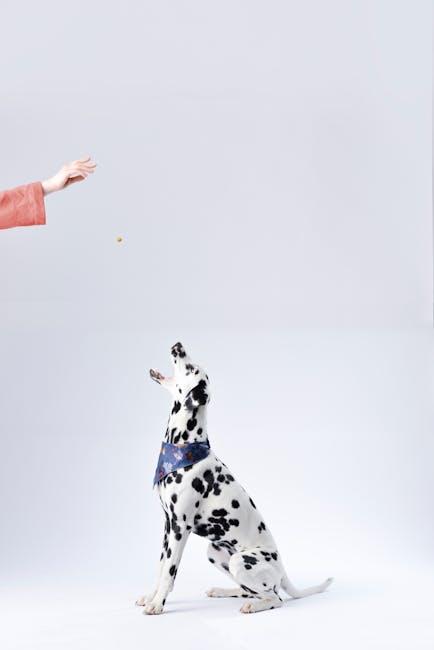Welcoming a new dog into your life is an exciting journey filled with joy, companionship, and the promise of countless adventures. Yet, as any seasoned pet owner will tell you, the path to a harmonious relationship with your furry friend is paved with patience, understanding, and effective communication. Teaching your dog basic commands is one of the most rewarding steps you can take to foster this bond. Not only does it help ensure their safety, but it also strengthens the trust and respect between you and your canine companion. In this article, we’ll explore the best ways to teach your dog essential commands, providing you with practical tips and techniques that are as enjoyable for you as they are for your dog. Whether you’re a first-time pet owner or looking to refine your training skills, these strategies will guide you towards a more fulfilling and cooperative relationship with your four-legged friend.
Start with Patience and Positivity
When embarking on the journey of teaching your furry friend basic commands, it’s crucial to embrace a mindset filled with patience and positivity. Dogs, much like humans, thrive in environments where they feel supported and encouraged. Remember, learning new things can be challenging for them, and your calm, upbeat demeanor will make a world of difference. Here are some tips to keep in mind:
- Celebrate small victories: Every time your dog successfully follows a command, no matter how minor, shower them with praise and a treat. This reinforces their behavior and builds their confidence.
- Consistency is key: Use the same words and gestures each time you give a command. This helps your dog understand what is expected of them without confusion.
- Short, fun sessions: Keep training sessions brief and engaging. This prevents your dog from becoming bored or overwhelmed, making learning a positive experience.
- Stay patient: If your dog doesn’t get it right away, don’t worry. Repetition and gentle guidance will eventually lead to success.
In the world of dog training, your attitude sets the tone. A warm, positive approach not only strengthens your bond but also makes learning an enjoyable adventure for both you and your pet.
Use Clear and Consistent Commands
When communicating with your furry friend, clarity and consistency are key. Dogs thrive on routine and predictability, so it’s essential to use the same word or phrase for each command every time. For instance, if you’re teaching your dog to sit, always use the word “sit” rather than mixing it with variations like “sit down” or “please sit.” This consistency helps your dog understand and remember what is expected of them.
- Use simple language: Stick to one-word commands like “stay,” “come,” or “heel.”
- Keep your tone consistent: Use a firm but friendly tone to convey your instructions.
- Be patient: Repetition and patience are crucial. Give your dog time to learn and adjust to the commands.
Remember, every interaction with your dog is a learning opportunity. By maintaining a consistent approach, you’ll create a clear line of communication that will make training sessions more effective and enjoyable for both you and your canine companion.
Incorporate Play and Rewards
- Engage with Toys: Use your dog’s favorite toys to make learning sessions enjoyable. Incorporate toys into training exercises by using them as a reward for correctly following a command. For instance, after a successful “sit” command, toss a ball for a game of fetch. This not only reinforces the behavior but also strengthens the bond between you and your furry friend.
- Offer Tasty Treats: Nothing motivates a dog quite like a delicious treat. Keep a variety of small, healthy treats on hand to reward your pup for good behavior. Make sure to vary the treats to keep things exciting. Remember to balance treats with your dog’s regular diet to maintain a healthy weight.
- Incorporate Games: Turn training sessions into fun games. Try a game of “hide and seek” with treats or toys to teach commands like “stay” and “come.” This approach keeps your dog engaged and eager to learn, transforming training from a chore into a joyful activity.
- Use Positive Reinforcement: Praise and affection are powerful tools. Alongside treats and toys, lavish your dog with enthusiastic praise or gentle pats when they respond correctly to commands. This positive reinforcement builds confidence and encourages your dog to repeat the desired behaviors.
Create a Calm and Focused Environment
When teaching your dog basic commands, it’s crucial to establish a setting that fosters tranquility and concentration. Start by choosing a quiet location free from distractions like loud noises or bustling activity. This could be a dedicated training room in your house or a calm spot in your backyard. Consistency is key, so try to use the same area for training sessions to help your dog associate the space with learning.
- Minimize Distractions: Ensure toys and other pets are out of sight to maintain your dog’s focus.
- Set the Mood: You can play soft background music or use calming scents like lavender to create a soothing atmosphere.
- Choose the Right Time: Train when your dog is alert but not overly energetic, such as after a short walk or a nap.
- Keep Sessions Short: Limit training to 10-15 minutes to prevent boredom and ensure your dog remains engaged.
By establishing a serene environment, you’re setting the stage for your furry friend to absorb new commands with ease and enthusiasm. Remember, patience and positive reinforcement will always yield the best results in training.

